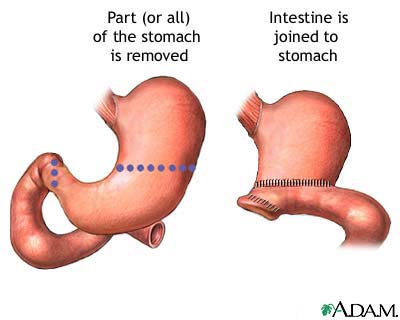


 |  |  |
| | ||
Gastrectomy

The stomach connects the esophagus to the small intestine, and functions to break up food into small particles that can be absorbed by the small intestine. In cases of chronic stomach problems (such as ulcers), obesity or cancer, partial or total removal of the stomach may be indicated. In the procedure, the diseased portion of the stomach is removed and the small intestine is attached to the remainder of the stomach to maintain the integrity of the digestive tract. The patient will be on nasograstric tube suction to keep the stomach empty and at rest after surgery. After several days, and when the stomach starts to function normally again, the tube will be removed and the patient will begin ingesting clear liquids and gradually progress to a full and normal diet.
Update Date: 7/25/2007 Updated by: Robert A. Cowles, MD, Assistant Professor of Surgery, Columbia University College of Physicians and Surgeons, New York, NY. Review provided by VeriMed Healthcare Network.
